SRAM Drops New RED AXS Groupset
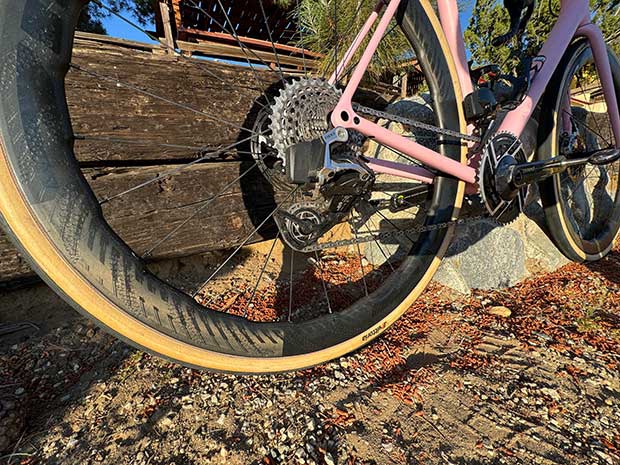
Any time the flagship groupset gets an upgrade that’s a big deal, because it’s the tech you can expect to see in all the groupsets. It’s a bigger deal now than ever since electronic shifting is in your future. Not only is electronic getting cheaper – while everything else is getting pricier – some elements of electronic are actually cheaper to make than mechanical. Complete bike assembly, for example. So, features on SRAM’s new RED AXS groupset will show up on a bike you buy in your future, at a price you find attractive, even if the components don’t say RED on it.
Shimano and SRAM are changing the way you ride your bike, and SRAM especially so. The components these companies make even change the way you’re positioned aboard your bike. Mostly it has to do with gearing and hood design and I’ll write about this in more detail in the coming days. Let’s just get into this new groupset.
Hoods/Controls
Both SRAM and Shimano have made great strides in the shape of their hoods and as comfortable as Shimano’s recent hood designs (current Dura Ace and GRX) have been, SRAM’s new RED AXS hoods might be the best of the bunch. The pommel is reduced in size and this is such a contrast to SRAM’s initial road hydraulic launch 11 years ago when the hydraulic fluid cylinder was embedded in that huge pommel. (See below.)
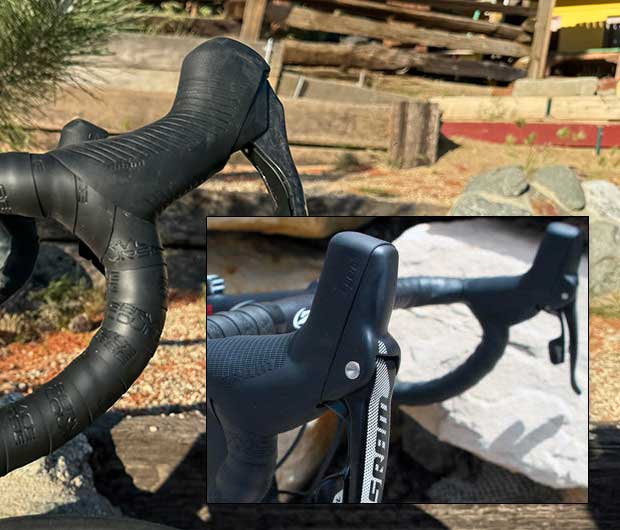
Hoods are just more comfortable than they used to be and partly for this reason the by-far dominant position these days is hands-right-there on the hoods. Less and less time is getting spent on the tops or the drops. SRAM/Zipp addresses this both in RED AXS hood design and in a new Zipp road handlebar, the SL80, made specifically to work with SRAM’s road groups (and launched today).
Shifting
SRAM likes to talk about a speed-up in the signal delivery to the rear derailleur. “Wireless latency” they call it. This isn’t a speed-up in the mechanical elements of shifting, just the signal speed. Okay. I did not recognize a difference in rear derailleur shift speed between, say, current Force AXS and new RED AXS. What is nice is that there is only one RD now, with a long enough cage to handle a 10-36. Because of this and the chain control that has made its way into all SRAM’s shift systems RED AXS is now also a gravel groupset if you so choose. The pulley wheels are larger and have ceramic bearings.
So that’s the rear, but this groupset’s revelation is front derailleur shifting. Below is the new RED AXS FD against an existing current Force AXS FD and it’s a pretty different design.
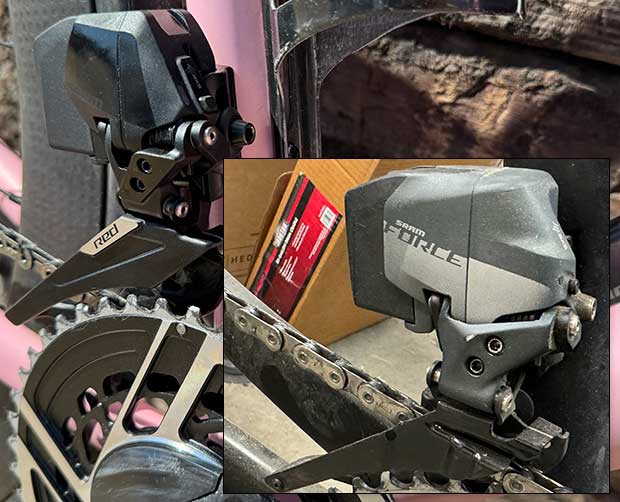
I have always felt – and written to SRAM’s chagrin – that any performance lead Shimano enjoys over SRAM is more apparent here, in front derailleur shifting. With this new RED AXS groupset that performance lead is narrowed or gone entirely. Why? SRAM “improved the FD shift path efficiency, along with other mechanical modifications,” is how it was explained it to me. I went on my first couple of rides without setting limit screws and the FD wouldn’t derail and shifted fast and flawlessly. I subsequently made those limit screw adjustments but as with Shimano the RED AXS FD probably doesn't even need limit screws anymore. This is how front derailleurs are supposed to shift. SRAM has closed down the one reliable lead Shimano has always enjoyed over SRAM in 2x.
One other thing about this new FD, the jig SRAM includes for FD set up is new. Big improvement (!) over the old jig; much easier and intuitive to use; and makes FD set up pretty idiot proof. There’s a pic of both the top and side views just below. The one thing about the jig that confused me is that it has printed on it, “RD must be in largest cog” and I didn’t know what that meant since you deploy the jig before you put the chain on the bike.
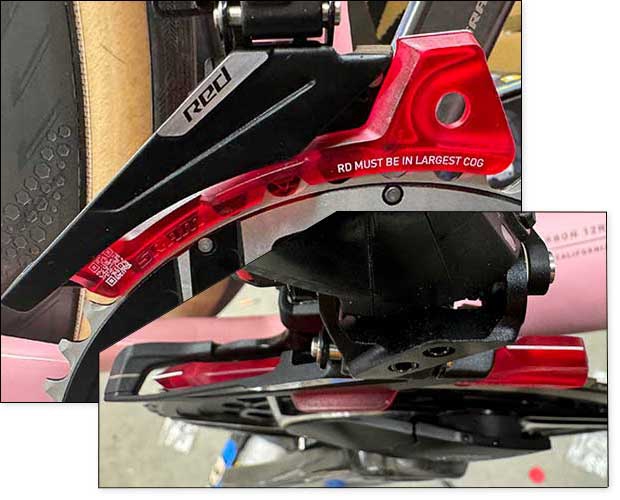
Turns out another new FD feature – a (very welcome!) auto-trim the old RED FD didn’t have – works best if you place the RD in the low-gear position before you pair the derailleurs to the system. The chain doesn’t need to be mounted and in fact the RD doesn’t even need to be on the bike. It just needs to be in that cog prior to pairing, and then the FD’s trim will work best.
There is a “bonus button” on these hoods to use for…? Up to you and the imagination of developers. Turning pages on a Hammerhead (and perhaps other) head units for example.
Braking
After hood design, and FD shifting, the next obvious improvement is in braking performance but I don’t know and can’t tell whether what I’m feeling is at the caliper or inside the hood. Braking is at the same time powerful while sensitive to modulation. This is another area where Shimano might’ve held an advantage but if so I don’t experience a difference anymore.
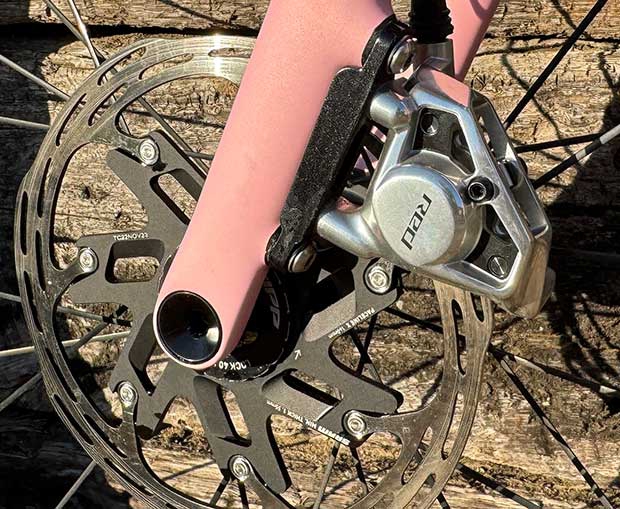
Let’s go back to the hoods for a moment, because part of the increased braking performance is due to the new shape of both the hoods and the levers. I place my hoods pretty high on the handlebars and this has always given me a bit of a reach problem when descending. I reach out, grab the lever with one finger, and then down the hill I go. With this new design grabbing the lever is a lot easier and that’s without any reach-adjustment done to shorten the lever (though reach adjustment is there if you need it).
Gearing
Let’s talk about gearing for a minute and if Shimano always enjoyed and edge in FD shifting SRAM was usually ahead in available gearing. I’ve been blessed – and SRAM has often been the blessor – in that I grew up in an age when the lowest available gear on a racing road group (42×21) met my needs during the peak of my power-to-weight ratio. Component companies saw fit to adjust their offerings in the exact proportion to my increasing weakness and lack-of-trim. The road bike I just built a few weeks ago has a 33-tooth front chain ring (46×33) and a 36-tooth rear cog (10-36). This means I can not only make steep grades (15 or 20 percent) I can ride them in an appropriate cadence.
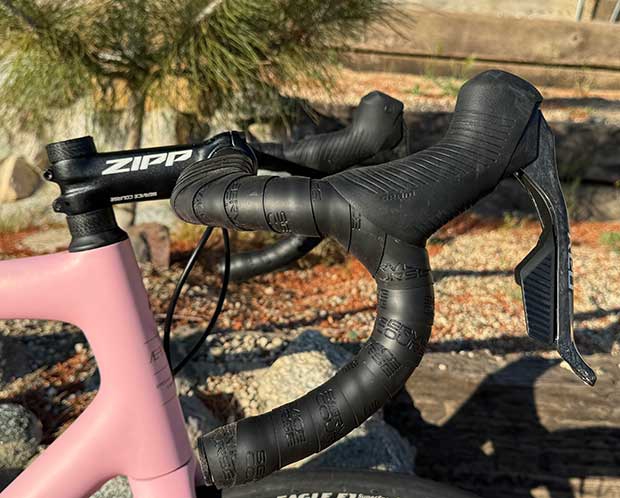
What makes this remarkable is that it’s available in SRAM’s top groupset. I think it took the cycling industry a long time to recognize who its customers were for Dura Ace, RED, Super Record. Unless we’re talking pro teams you give these groupsets to, we can only buy them when we’re in our peak earning years or when we’re retired, getting a monthly check for not working, and are busy spending our kids’ inheritance. Note to component brands: Give us the low gears.
Specs, Weight, Price
New SRAM RED AXS weighs about 150 grams less than its prior version. The aftermarket MSRP is $3,000 not counting crank and chain rings, which would be another $700. This price includes a Hammerhead Karoo head unit.
In Triathlon
My history with SRAM goes back to 1989, when I introduced a tri bike design that featured an idea or two that were pretty widely ridiculed at the time but have made their ways into the bikes you ride today. I made a call to that company and asked for a sample of a bar-end shifter that wasn’t designed as a bar-end shifter, and I wonder whether (like Shimano’s Bar-con) its triathlon sales were way ahead of the sales SRAM had in mind for this shifter.
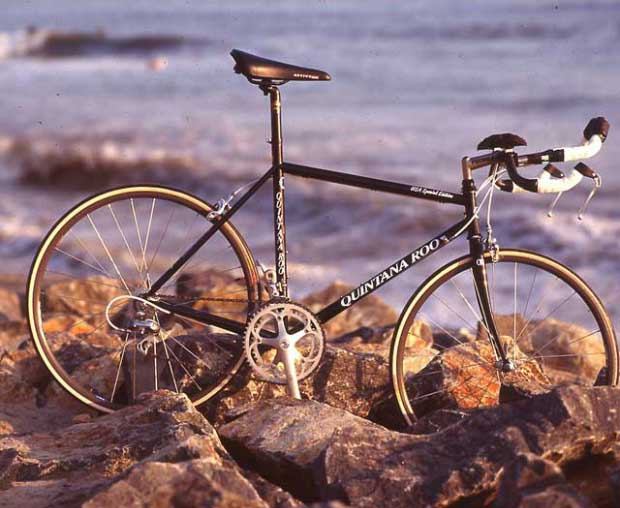
SRAM has had a way of making a world-beating shifter that is usually not designed for triathlon but we take it and use it for the purpose we choose. This is the case with SRAM’s Wireless Blip. But for a bracket or two these would be turnkey perfect products for us. So, we McGuyver a little and make them our ideal bar-end and pursuit shifters.
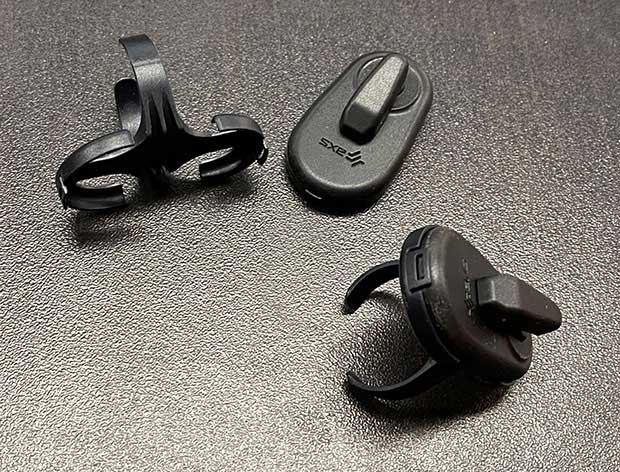
Because of this product – with system pairing now achievable through SRAM’s AXS app – this new RED AXS groupset, with its significantly improved FD shift performance, is not only a crackerjack road groupset it has become a real contender for best overall tri bike groupset.


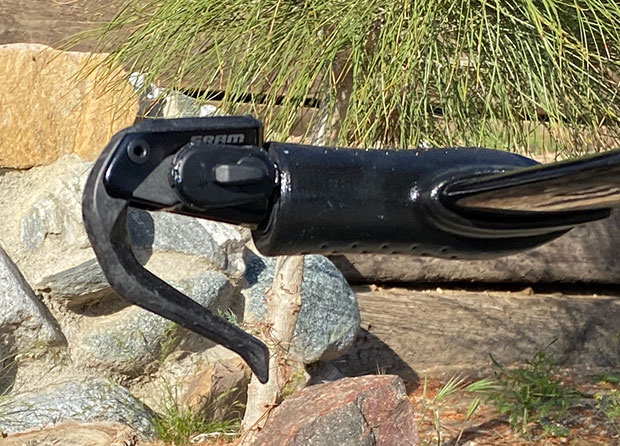
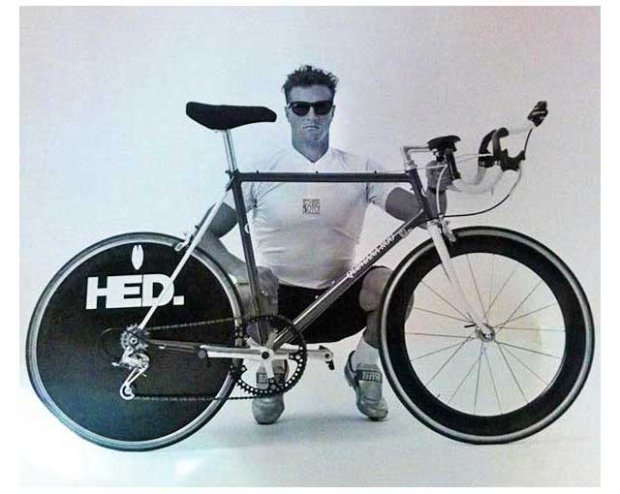
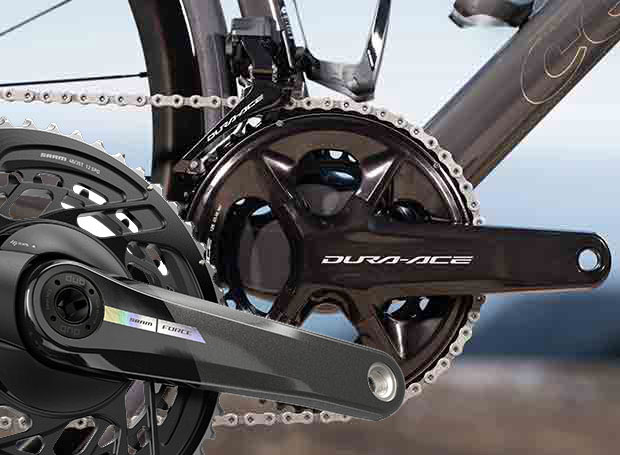
Start the discussion at slowtwitch.northend.network